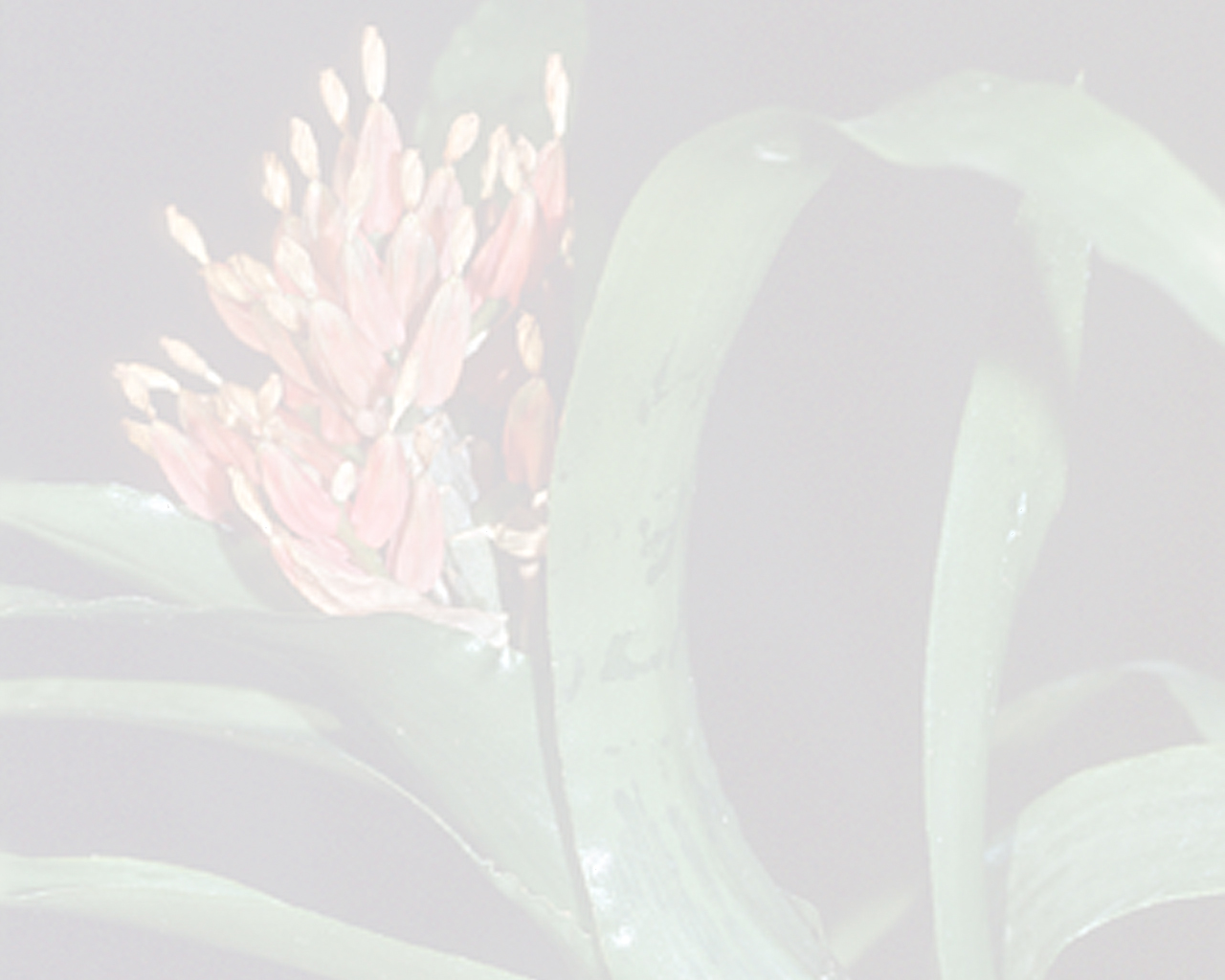Lymania corallina (Brongn. ex Beer) Read
Literature references:
*move your mouse pointer over the page numbers to see comment
Comments:
- Lymania corallina can be found in the southern Bahia rain forest that grows on the mountains along the sea, generally called the Atlantic Forest. As an epiphyte, this gracious bromeliad develops through long and slender stolons on trees and bushes in the lower stratum of the forest. In this part of the woods the microclimate is marked by dense shade and intense dampness. The dampness is maintained by the heavy rains (annual average about 1100-2000 mm). Other factors such as the annual temperature of 24 degrees C, the low elevation, and the proximity of the Atlantic Ocean are also important.
Cultivation of Lymania corallina, as well as the other species of this genus, has not presented serious difficulties in Rio de Janeiro since its reproduction is easy. But, to imitate nature and to provide a better rooting and better fixing for the new bud that will grow, we are in the habit of introducing tree fern fiber in one piece (35 cm long and 5 cm in diameter) vertically in a 20-cm pot, fixing it in position with common substratum for growing epiphytes. The specimens are planted near the base of the tree fern and to the new bud will be left the task of finding its vertical way. That will happen in a very short time.
Some Brazilian herbaria, especially those of the Rio de Janeiro Botanical Garden and the Cocoa Research Center (Centro de Pesquisas do Cacau -CEPLAC), have in their collections of dried plants specimens of peculiar bromeliads generally identified as Aechmea brachycaulis Morren ex Baker. Yet, a slight examination of these exsiccates has revealed the presence of discordant morphological elements in each of them that show how risky is identification on the basis of the keys and studies then available.
With the publication of Dr. Robert W Read's research that resulted in the creation of the genus Lymania new light was shed on the complex of species imperfectly identified as A. brachycaulis. The confusion being straightened out, it became easy to identify clearly those species as L. alvimii (L.B. Smith & R.W. Read) R.W.Read, L. smithii R.W. Read, and L. corallina (Brongniart ex Beer) R. W. Read.
As such identifications are being made, different data and information are being gathered. These allow a better understanding of the ecological preferences and the geographical distribution of these species. On the other hand, the genus Lymania is still a quite new item in the list of cultivated bromeliads in the United States as well as in other countries. Among the most common species found in cultivation, the outstanding are L. alvimii and L. smithii. As for L. marantoides (L.B. Smith) R.W. Read, we can tell with certainty that the species is practically nonexistent in collections. The same can be said of L. corallina.
Some specimens, however, picked up in Bahia state by G. Martinelli were grown in Rio de Janeiro by E.M.C. Leme. As they bloomed, it was revealed that they belonged to Lymania corallina. All indications point to the fact that L. corallina is one of the most ornamental of all of the representatives of the genus, not only for the different colors of their leaves, which can be green or wine-colored, but for the remarkable coral color of its inflorescence. Such characteristics were faithfully reproduced in the precise art of Edouard Morren and are presented here in more detail: —See J. Bromeliad Soc.

